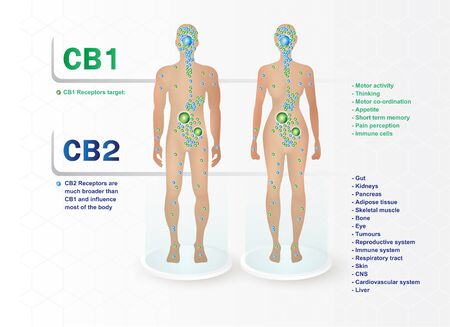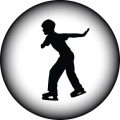Understanding Muscle Strains in Athletic Populations
Muscle strains are one of the most common injuries seen in athletes across all levels of sports, from high school teams to professional leagues. Simply put, a muscle strain happens when muscle fibers are overstretched or torn. This can range from a mild stretch to a complete tear of the muscle tissue. These injuries are especially common in sports that involve quick bursts of speed, sudden stops, or changes in direction, like soccer, basketball, football, and track events.
What Are Muscle Strains?
A muscle strain occurs when muscles are pushed beyond their normal limits. This can happen during activities that demand a lot from the body or when an athlete skips a proper warm-up. Strains are typically graded on a scale:
| Grade | Description | Symptoms |
|---|---|---|
| Grade 1 (Mild) | Minor stretching or tearing of muscle fibers | Mild pain, minimal loss of strength or movement |
| Grade 2 (Moderate) | More significant tearing without complete rupture | Noticeable pain, swelling, limited movement |
| Grade 3 (Severe) | Complete tear of the muscle | Severe pain, swelling, possible muscle deformity, major loss of function |
How Do Muscle Strains Happen in Athletes?
Athletes are often at higher risk for muscle strains due to the intensity and repetitive nature of training and competition. Some common ways muscle strains occur include:
- Overuse: Repeating the same movement over and over can fatigue muscles and make them more prone to injury.
- Lack of warm-up: Skipping warm-up routines can leave muscles tight and less flexible.
- Poor technique: Using incorrect form during activities puts extra stress on certain muscles.
- Sudden movements: Quick accelerations, decelerations, or pivots can cause muscles to stretch too far too quickly.
Why Are Strains So Common in Sports?
Certain sports put more demand on specific muscle groups, increasing the risk for strains. For example, hamstring strains are frequently seen in sprinters and football players because these muscles work hard during explosive running and kicking actions. In contrast, baseball pitchers might experience strains in their shoulder or forearm muscles due to repetitive throwing motions.
| Sport | Commonly Affected Muscles | Typical Cause of Strain |
|---|---|---|
| Soccer/Football | Hamstrings, Groin | Sprinting, sudden changes in direction |
| Basketball | Calves, Quadriceps | Jumping, fast breaks, quick pivots |
| Baseball/Pitching | Shoulder, Forearm | Repetitive throwing motions |
| Tennis | Biceps, Back Muscles | Swinging racquet repeatedly, sudden lunges |
| Track & Field (Sprinting) | Hamstrings, Calves | Burst starts and high-speed running |
The Importance of Recognizing Muscle Strains Early On
If athletes ignore early signs of a strain—like soreness or tightness—they risk making the injury worse. Early recognition helps prevent further damage and allows for quicker recovery with targeted physical therapy interventions.
2. The Initial Assessment: Identifying the Extent of Injury
When an athlete experiences a muscle strain, physical therapists (PTs) play a crucial role in guiding their recovery journey. The first step is always a thorough initial assessment. This step helps PTs determine how serious the injury is and what treatment plan will work best for the athlete. In the United States, physical therapists rely on clinical guidelines and evidence-based tools to make these decisions, ensuring athletes receive safe and effective care.
Understanding Muscle Strains
A muscle strain means that some muscle fibers have been overstretched or torn. These injuries can happen during sports or workouts when a muscle is pushed too far or too fast. PTs need to figure out if the strain is mild, moderate, or severe because each level needs different care. Here’s how they break it down:
| Severity Level | Description | Common Signs |
|---|---|---|
| Grade I (Mild) | Few muscle fibers are damaged | Mild pain, little to no loss of strength, minor swelling |
| Grade II (Moderate) | More extensive fiber damage, but muscle not completely torn | Moderate pain, swelling, noticeable weakness, bruising |
| Grade III (Severe) | Muscle is completely torn or ruptured | Severe pain, major loss of function, significant bruising/swelling, sometimes a gap in the muscle |
How Physical Therapists Evaluate Muscle Strains
During the initial assessment, PTs use a combination of questions and hands-on testing to understand the injury:
- History: Asking about how the injury happened, any previous injuries, and what movements make it worse or better.
- Observation: Looking for swelling, bruising, changes in muscle shape, or difficulty moving.
- Palpation: Gently pressing on the injured area to find tenderness, warmth, or gaps in the muscle.
- Range of Motion Tests: Checking how much the athlete can move the injured area compared to the uninjured side.
- Strength Testing: Seeing if there’s any weakness when the athlete tries to contract the muscle.
Evidence-Based Tools and Guidelines
American PTs often follow protocols from organizations like the American Physical Therapy Association (APTA). They might use special scales—like the Visual Analog Scale for pain—or standardized tests to measure swelling and function. Sometimes, if there’s concern about a more serious injury like a complete tear, therapists may refer athletes for imaging tests such as ultrasound or MRI.
The Importance of Accurate Assessment
An accurate initial assessment sets athletes up for successful healing. By using both hands-on evaluation and clinical guidelines, PTs make sure they’re building a treatment plan that matches each athlete’s unique needs and goals. This patient-centered approach is at the heart of physical therapy in America’s sports culture.

3. Personalized Treatment Planning
When it comes to muscle strains in athletes, physical therapists (PTs) know that no two injuries are exactly alike. Every athlete brings a different story—different sports, training routines, and goals. That’s why PTs in the U.S. focus on creating personalized treatment plans that fit each individual’s needs. Here’s how they do it:
Understanding the Injury Grade
Muscle strains are commonly classified into three grades based on severity:
| Grade | Description | Typical PT Approach |
|---|---|---|
| Grade I | Mild: small number of fibers torn, minimal loss of strength and function | Pain management, gentle stretching, gradual strengthening exercises |
| Grade II | Moderate: larger number of fibers involved, noticeable weakness and limited movement | Progressive loading, manual therapy, functional movements, activity modification |
| Grade III | Severe: complete tear or rupture, significant loss of function | Possible surgical consult, immobilization initially, then guided rehab for mobility and strength |
Factoring in Athletic Goals
Athletes have unique objectives—some need to get back for playoffs, while others want to prevent future injuries. During the planning process, PTs take time to discuss:
- Return-to-play timelines: Balancing safe healing with athletic schedules
- Sport-specific needs: Customizing exercises for soccer players vs. runners vs. basketball athletes
- Long-term performance: Addressing movement patterns to improve overall resilience and reduce re-injury risk
Integrating the Latest Research and Techniques
The world of sports medicine is always evolving. American PTs stay up-to-date by using evidence-based practices, meaning they combine clinical expertise with the latest research findings. This could include:
- Modalities like dry needling or laser therapy: Used if supported by recent studies for specific muscle injuries
- Eccentric strengthening protocols: Shown to be highly effective for certain strains, especially hamstring injuries
- Technology-assisted rehab: Tools like motion analysis apps or wearable sensors to track progress and fine-tune exercises
The Athlete-PT Partnership
A big part of successful rehab is teamwork. PTs encourage open communication so athletes feel comfortable sharing feedback about pain levels or concerns during recovery. This partnership helps adjust the plan as needed for the best possible outcome.
4. Rehabilitation Techniques and Modalities
Movement-Based Therapies
Physical therapists (PTs) use a variety of movement-based therapies to help athletes recover from muscle strains. These exercises aren’t just about stretching or lifting weights—they’re carefully chosen to match the athlete’s injury and sport. Early on, gentle range-of-motion exercises keep muscles flexible without causing more harm. As healing progresses, PTs guide athletes through strength training, balance work, and functional movements that mimic real sports actions. This helps athletes regain confidence and get back to peak performance.
| Therapy Type | Purpose | Example Activities |
|---|---|---|
| Range of Motion | Restore joint flexibility | Ankle circles, arm swings |
| Strengthening | Rebuild muscle power | Resistance bands, bodyweight squats |
| Balance & Proprioception | Improve stability and coordination | Single-leg stands, balance boards |
| Functional Training | Mimic sports-specific skills | Ladder drills, agility exercises |
Manual Therapy Techniques
Hands-on care is a big part of physical therapy in the U.S. PTs use manual therapy to reduce pain, improve blood flow, and relax tight muscles. These techniques include soft tissue massage, joint mobilization, and trigger point release. Manual therapy can also help break up scar tissue and boost the body’s natural healing response.
- Soft Tissue Massage: Relieves muscle tension and soreness.
- Joint Mobilization: Gently moves joints to restore their normal motion.
- Trigger Point Release: Targets knots in the muscle that cause pain.
Technology-Assisted Modalities
The latest technology plays a big role in modern sports rehab. PT clinics across America use various devices and equipment to speed up recovery and reduce discomfort. Here are some common modalities:
| Modality | Main Benefit | How It’s Used |
|---|---|---|
| Cryotherapy (Ice) | Reduces swelling & pain after injury | Ice packs or cold compression sleeves applied for 10-20 minutes at a time. |
| Electrical Stimulation (E-stim) | Pain relief & muscle re-education | Pads placed on skin send mild electrical pulses to affected area. |
| Ultrasound Therapy | Promotes tissue healing with sound waves | A gel-covered wand moves over the strained muscle for deep heat effect. |
| Kinesiology Taping (K-tape) | Adds support & reduces strain during activity | Tape is applied directly to the skin over injured areas. |
| Compression Devices | Improves circulation & decreases swelling | Pneumatic boots or sleeves gently squeeze the limb in cycles. |
The Role of Education and Patient Involvement
A key part of American physical therapy culture is empowering athletes with knowledge about their injury and recovery plan. PTs teach athletes how to perform home exercises safely, recognize warning signs of re-injury, and manage pain between sessions. Athletes are encouraged to take an active role in their rehab—this team approach often leads to better results on and off the field.
5. Preventing Re-injury and Optimizing Performance
Long-Term Recovery: More Than Just Healing
When athletes are recovering from muscle strains, physical therapists in the U.S. focus on more than just healing the injury—they look at long-term recovery and how to prevent future injuries. The goal is to help athletes get back in the game stronger and safer, using proven strategies that blend science with real-life sports experience.
Key Strategies for Injury Prevention
Physical therapists teach athletes how to protect themselves from re-injury through a mix of education, proper training techniques, and regular check-ins. Here are some common strategies:
| Strategy | Description | Why It Matters |
|---|---|---|
| Warm-Up & Cool-Down Routines | Dynamic stretching before activity and static stretching after | Prepares muscles, improves flexibility, reduces risk of strain |
| Strength Training | Targeted exercises to support weak or injured areas | Makes muscles and joints more resilient during play |
| Movement Analysis | Reviewing running, jumping, or throwing technique | Identifies risky habits; corrects form to avoid future injuries |
| Education on Body Awareness | Teaching athletes to listen to pain signals and fatigue cues | Helps athletes know when to rest or modify their activity |
| Personalized Home Exercise Programs (HEP) | Custom plans for ongoing self-care outside the clinic | Keeps recovery on track and builds lifelong healthy habits |
Optimizing Performance for Return to Play
Athletes want not just to return—but to perform at their best. Physical therapists in the U.S. use performance enhancement strategies that include:
- Plyometric Drills: Improve explosive power for sports like basketball or soccer.
- Sport-Specific Drills: Mimic game movements safely as part of rehab.
- Balance and Agility Training: Reduce the chance of falls or awkward movements that could cause another strain.
- Nutritional Guidance: Basic advice on fueling muscles for faster recovery and sustained energy.
- Mental Coaching: Help athletes rebuild confidence after an injury through positive reinforcement and visualization techniques.
The Role of Communication and Follow-Up
A big part of preventing re-injury is staying connected with the athlete’s coaches, trainers, and sometimes even family members. Physical therapists often provide progress updates, share tips with coaches, and encourage open communication so everyone supports the athlete’s safe return.


